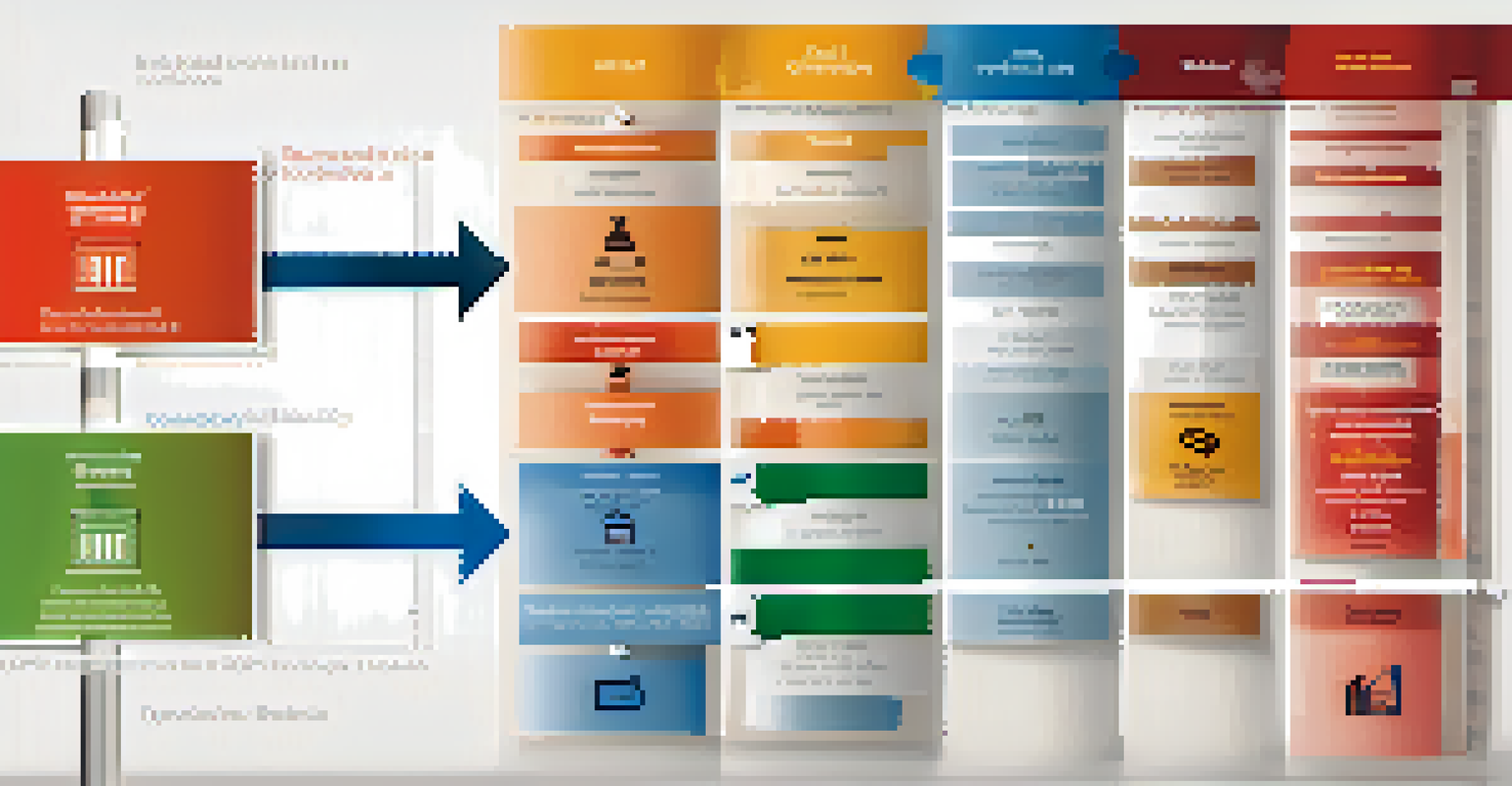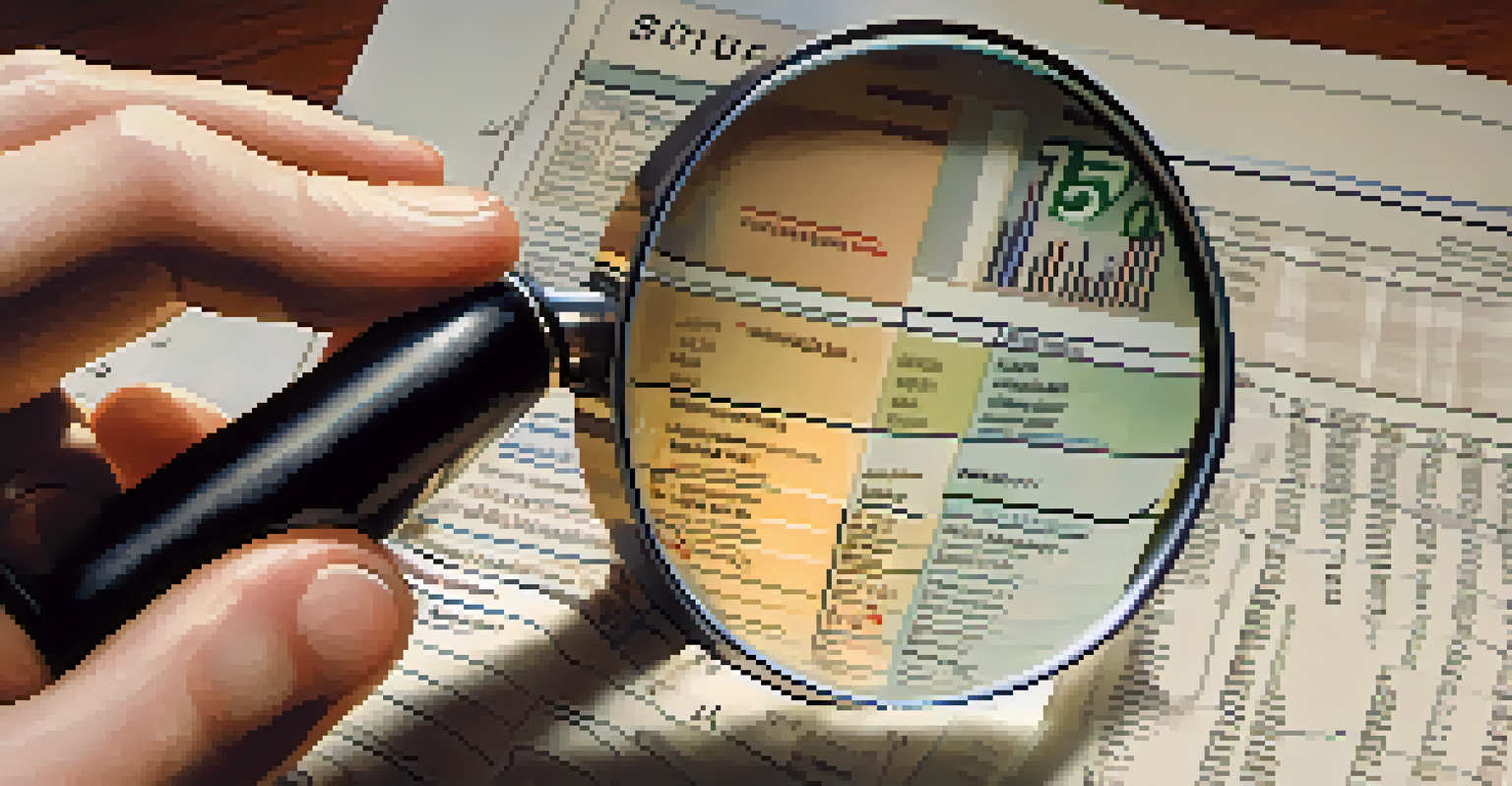Analyzing Economic Cycles: Their Influence on Investments

What Are Economic Cycles and Why Do They Matter?
Economic cycles refer to the fluctuations in economic activity that an economy experiences over time, typically measured by GDP. These cycles generally include four phases: expansion, peak, contraction, and trough. Understanding these phases is crucial for investors, as each one presents unique opportunities and risks.
The stock market is filled with individuals who know the price of everything, but the value of nothing.
For instance, during an expansion, consumer confidence is high, leading to increased spending and investment. Conversely, during a contraction, businesses may cut back on spending, which can lead to lower stock prices. Recognizing where we are in the cycle can help investors make more informed decisions about where to allocate their resources.
In essence, being aware of economic cycles enables investors to anticipate market movements and adjust their strategies accordingly. This knowledge can provide a significant edge in navigating the complexities of the investment landscape.
The Phases of Economic Cycles Explained
To better grasp economic cycles, it's essential to break down each phase. The expansion phase is characterized by rising economic activity, job creation, and increasing consumer spending. This is often seen as a golden period for investments, as companies thrive and stock prices typically rise.

Following expansion is the peak phase, where the economy hits its highest point. While it may seem like a time for celebration, it can be a warning sign for investors. As growth slows, the risk of a downturn increases, making it vital for investors to reassess their portfolios.
Understanding Economic Cycles
Economic cycles, comprising expansion, peak, contraction, and trough phases, are essential for investors to navigate opportunities and risks.
Next comes the contraction phase, where economic activity slows, leading to increased unemployment and reduced consumer spending. This phase can be challenging for investors, but it can also offer opportunities to buy undervalued assets. Finally, the trough phase signals the end of the contraction and the beginning of recovery.
How Economic Cycles Influence Investment Strategies
Economic cycles have a profound impact on investment strategies. During expansion, investors often lean towards growth stocks, which tend to outperform as companies expand their operations. Sectors like technology and consumer discretionary often shine in this phase, providing ample opportunities for profit.
In investing, what is comfortable is rarely profitable.
In contrast, during contraction, defensive investments become more appealing. Investors may shift their focus to sectors like utilities or consumer staples, which tend to be more resilient in downturns. This strategic pivot can help preserve capital and mitigate losses during challenging economic times.
Understanding which sectors thrive during various phases equips investors to make more strategic decisions. By aligning their investments with the current phase of the economic cycle, they can optimize returns and minimize risks.
The Role of Interest Rates in Economic Cycles
Interest rates play a significant role in shaping economic cycles. When central banks lower interest rates, borrowing becomes cheaper, encouraging both consumer spending and business investment. This can stimulate economic growth and push the cycle into an expansion phase.
Conversely, when rates rise, borrowing costs increase, often leading to reduced spending. This can slow down the economy and signal the onset of a contraction phase. Investors must keep a close eye on interest rate trends, as these changes can dramatically influence market dynamics.
Interest Rates Impact Investments
Interest rates influence economic cycles significantly, affecting borrowing costs and investment strategies during different phases.
By understanding the relationship between interest rates and economic cycles, investors can better predict shifts in the market. This awareness allows them to adjust their strategies proactively and navigate the complexities of the investment landscape.
The Impact of Inflation on Economic Cycles
Inflation is another critical factor that interacts with economic cycles. During periods of economic expansion, demand for goods and services often outstrips supply, leading to rising prices. While moderate inflation can be a sign of a healthy economy, excessive inflation can erode purchasing power and harm consumer confidence.
In times of high inflation, central banks may respond by increasing interest rates, which can cool economic activity and push the economy into a contraction phase. For investors, this creates a delicate balancing act as they must navigate the challenges posed by rising prices and interest rates.
Understanding how inflation affects economic cycles allows investors to adapt their strategies accordingly. For instance, certain asset classes, like real estate or commodities, may offer a hedge against inflation, making them attractive during periods of rising prices.
Utilizing Economic Indicators for Investment Decisions
Investors can leverage various economic indicators to gauge where we are in the economic cycle. Key indicators include GDP growth rates, unemployment rates, and consumer confidence indices. By analyzing these metrics, investors can get a clearer picture of economic health and make more informed decisions.
For example, a rising GDP typically indicates an expanding economy, which may encourage investments in growth sectors. Conversely, a spike in unemployment may signal a contraction, prompting investors to pivot toward defensive strategies. This proactive approach can help investors stay ahead of the curve.
Inflation's Role in Economic Health
Inflation affects consumer confidence and can lead to strategic investment shifts, making it crucial for investors to monitor its trends.
Incorporating economic indicators into investment strategies can enhance decision-making. By staying informed about these metrics, investors can better navigate the ebbs and flows of economic cycles and optimize their portfolios.
Conclusion: The Importance of Cycle Awareness in Investing
In conclusion, understanding economic cycles is crucial for making informed investment decisions. By recognizing the various phases and their implications, investors can adapt their strategies to optimize returns and manage risks effectively. This awareness allows them to navigate the complexities of the market with greater confidence.
Investors who pay attention to economic indicators, interest rates, and inflation can position themselves advantageously within the cycle. This proactive approach can lead to smarter investment choices and ultimately greater financial success.

Ultimately, being attuned to economic cycles empowers investors to seize opportunities and mitigate risks, fostering a more resilient investment strategy over time.